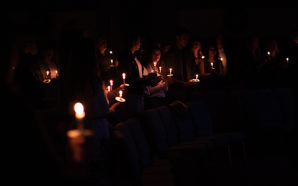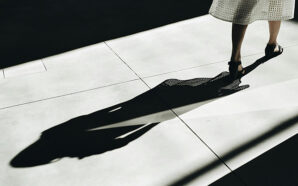The atomic bomb fell on Hiroshima on August 6, 1945, the Catholic Feast of the Transfiguration. In the Gospel story Peter, James and John see the light of God’s glory shine out of Jesus. The contrast between the light that brings life and the light that brought death has haunted Christian reflection on Hiroshima.
In the Scriptures light is almost always seen as good, in contrast to darkness. If we see the light we move from confusion to clarity. When we walk in the light we are free from the darkness of sin. When Moses goes up the mountain to speak with God, he needs to veil his face for his own protection. God is light; Jesus, the Son of God, is described as God from God, light from light. In the parable, careless people thrown out of the marriage feast of heaven fall into darkness.
Against that background we are not surprised to hear that when Jesus is revealed for who he is on the mountain, his clothing and his face are lit up with a blinding light. Jesus is the light of the world. After their initial fright, Peter, James and John discover that the top of the mountain is a good place to be. In the dazzling light they have come alive.
At Hiroshima the flash of the atomic bomb was described as brighter than a thousand suns. It bought death to about 140,000 people, and in subsequent years many thousands more suffered from its effects.
The symbolism of the bomb and of Jesus’s transfiguration have many similarities but greater differences. Both displayed power, one the power of God and the other of human devising. The power of both was expressed in the light and the sounds that accompanied the event. In both the light and sound came from above, in one case from God with a message of comfort, and in the other from the bomb with a message of desolation. In both scenes the people considered wise in their tradition gathered around the event. Moses and Elijah represented the Jewish tradition; scientists and generals represented the military tradition.
Though superficially so similar, the two displays of light were ultimately opposed. Jesus’ transfiguration revealed God’s love and reconciliation. Its light promised life. The atomic bomb revealed man’s inhumanity to man, hatred and destruction of community. It promised the end of human life on earth and a peace based only on mutual mistrust.
As we celebrate the revelation of God in Jesus in a year when the use of nuclear weapons has again been canvassed, we are invited to turn away from the darkness that follows the light of Hiroshima. We are invited to put our trust in the God of light who sent his Son unarmed to bring peace and reconciliation.
For us at Jesuit Social Services the choice between the light that gives life and the light that brings darkness speaks strongly. The vulnerable people we serve are so often harmed by flashy policies prompted by media glare. They depend for their flourishing on the light of respect for their humanity and the light of truth in their treatment. The choice between true and false light reaches beyond war and peace.
Fr Andrew Hamilton SJ writes for Jesuit Communications and Jesuit Social Services.








